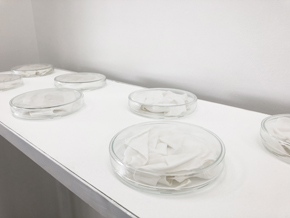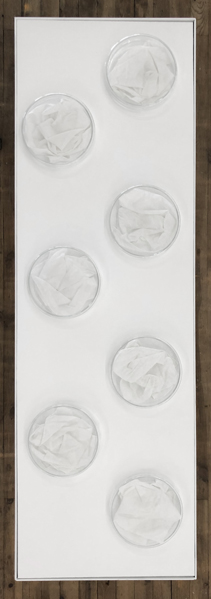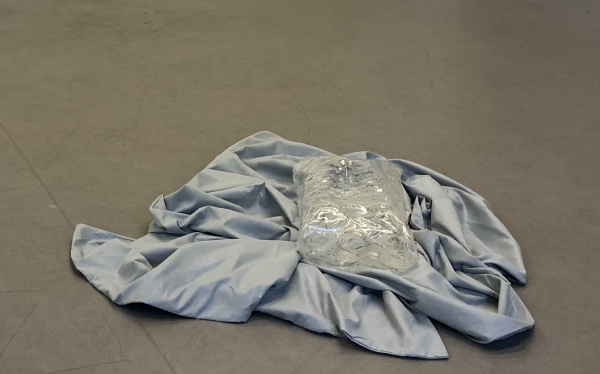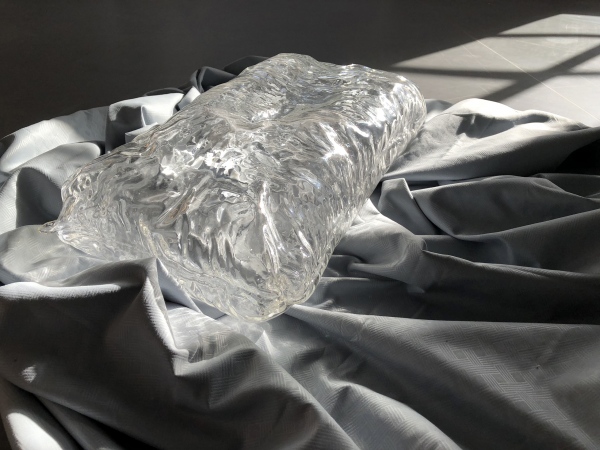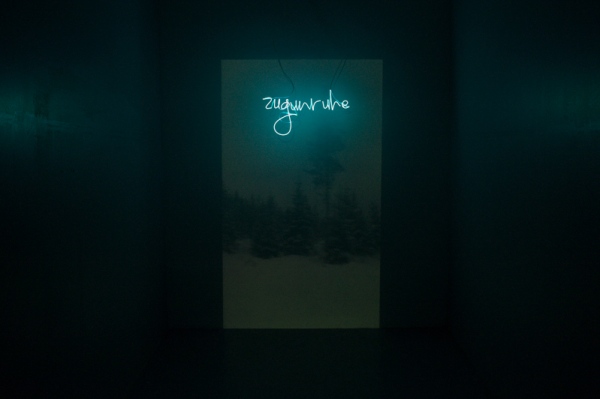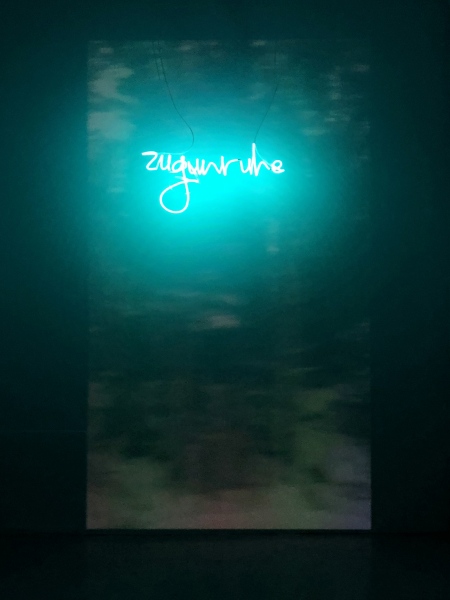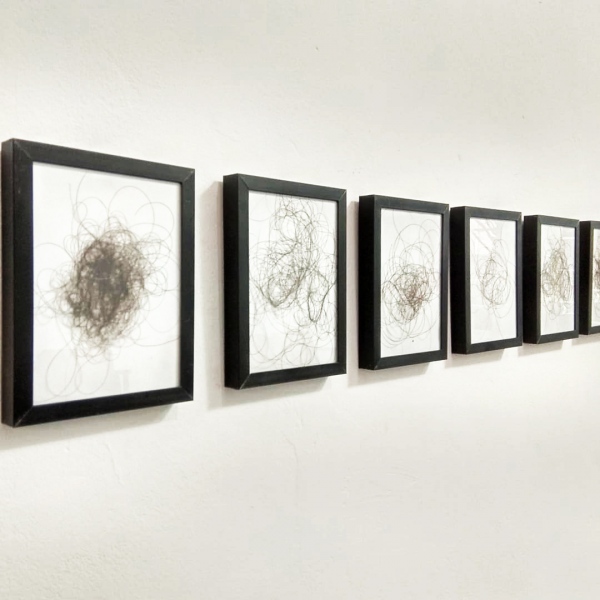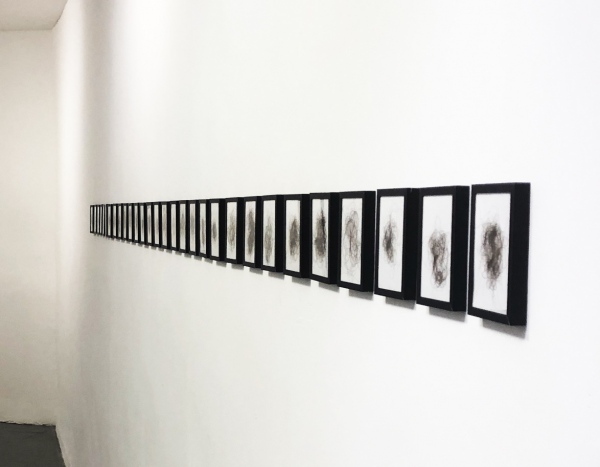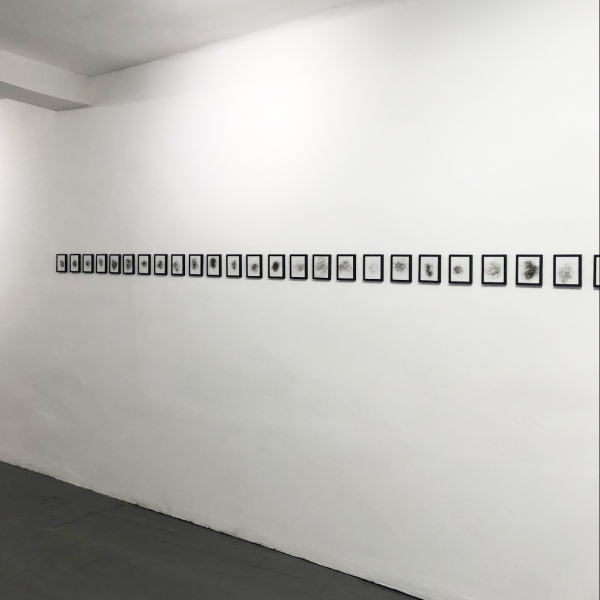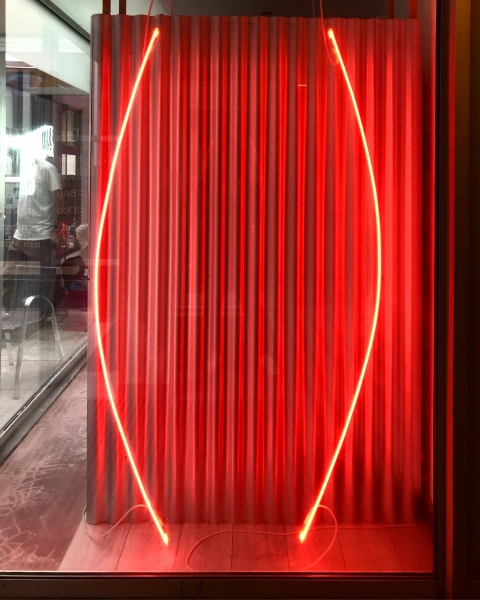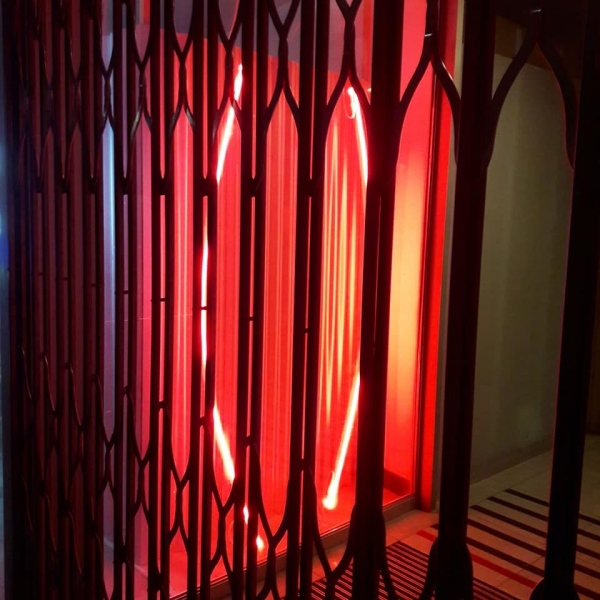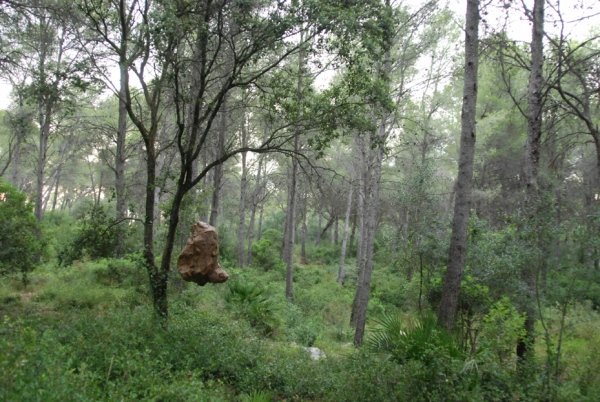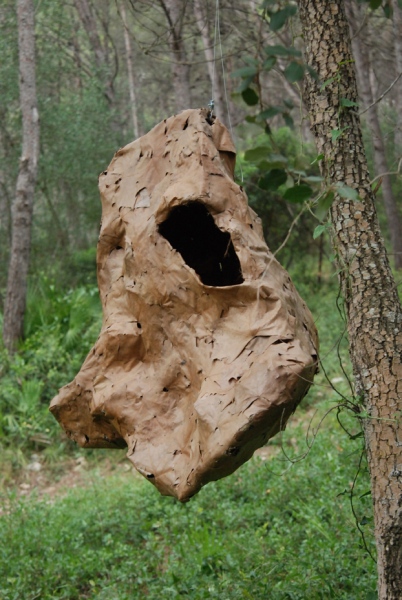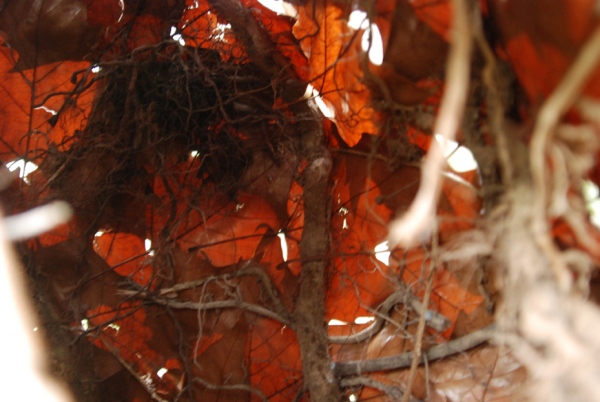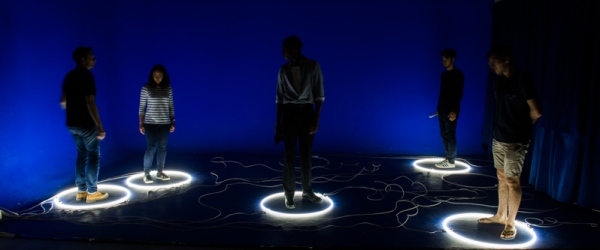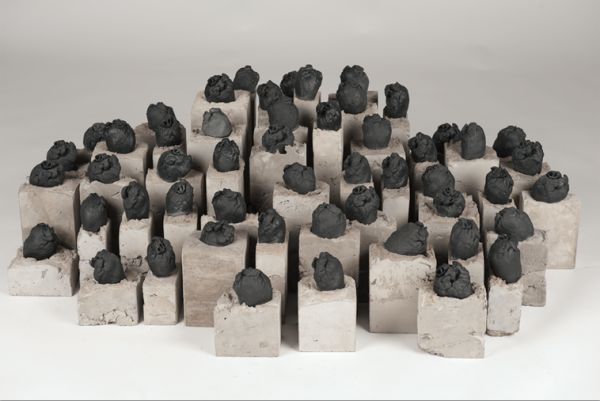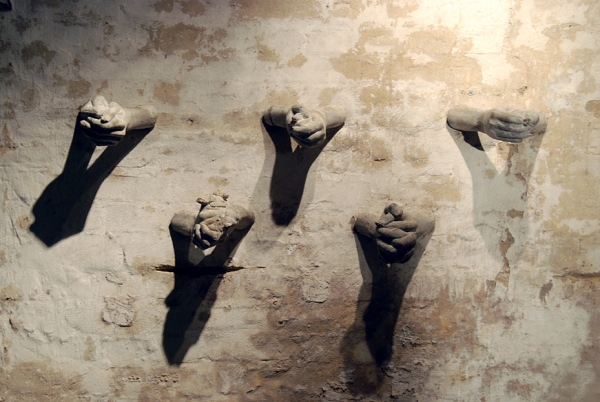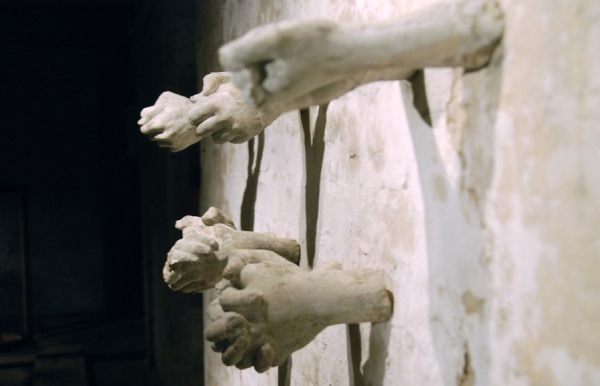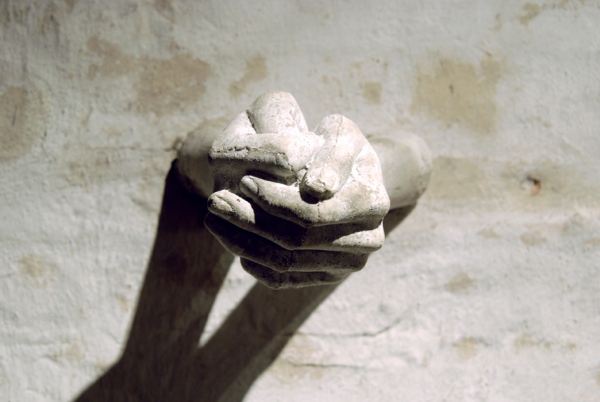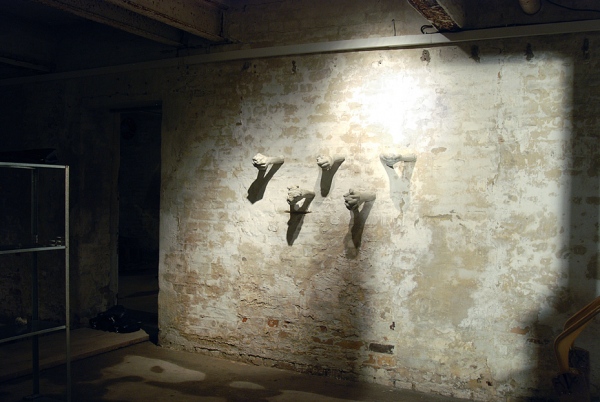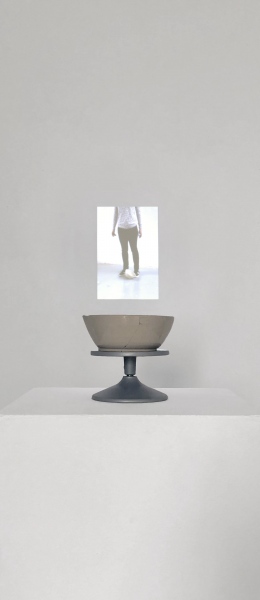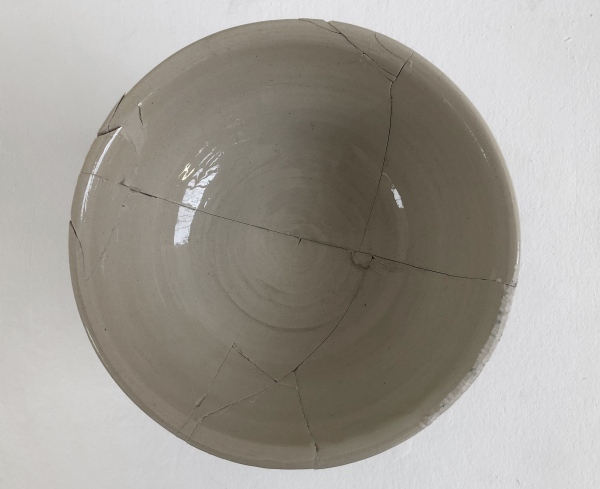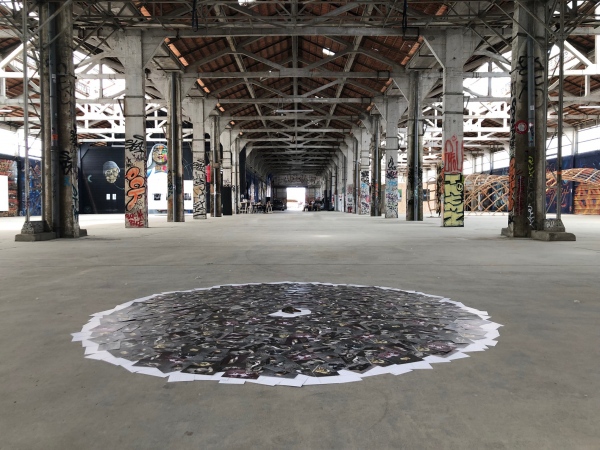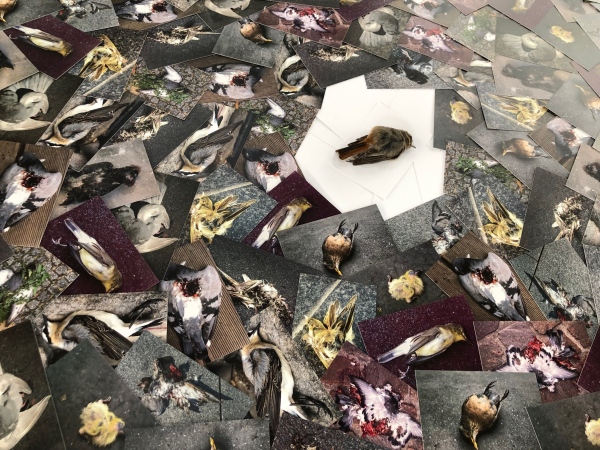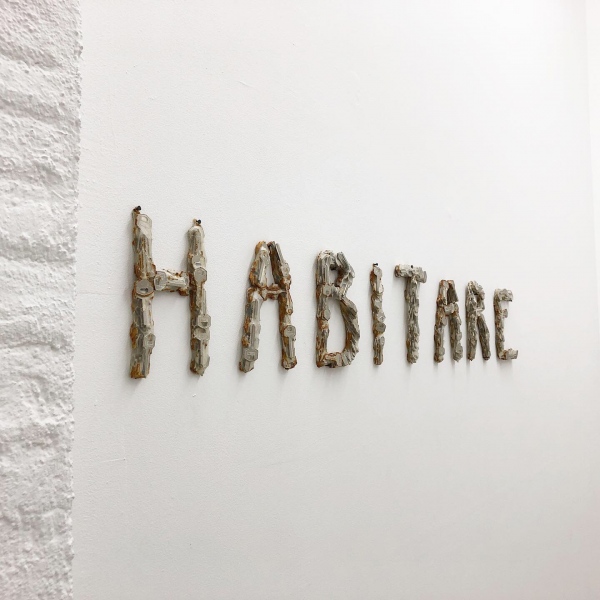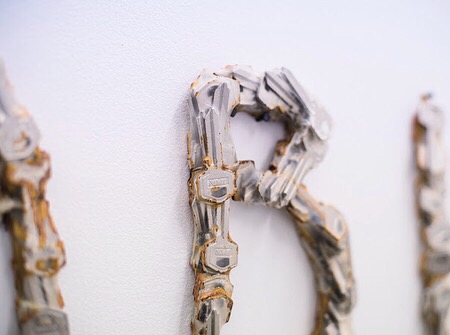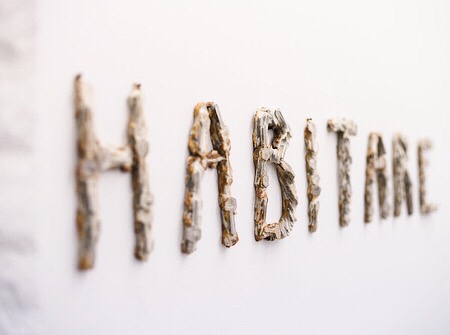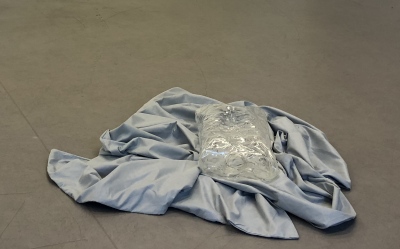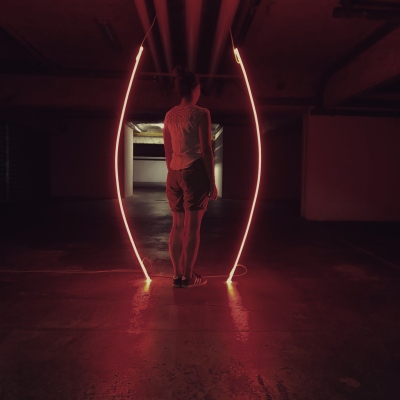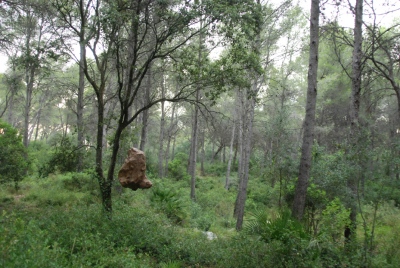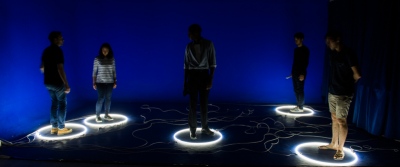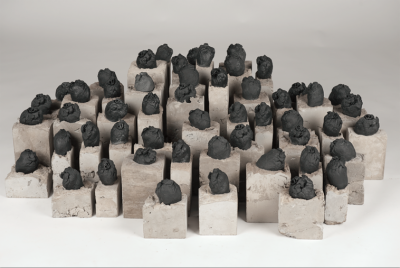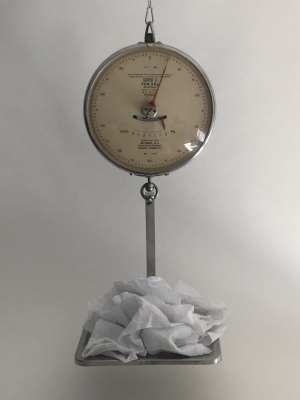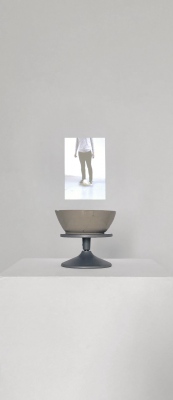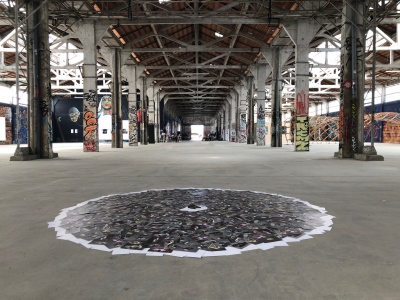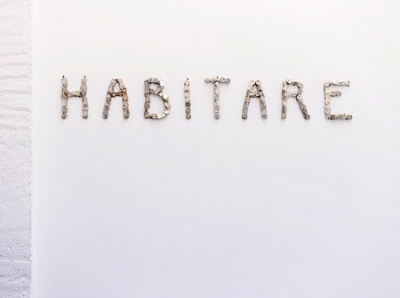-
Measure of Sadness (unit), 2019. Tissues. 15 x 15 x 2 cm Each.
How could we measure sadness? What is its unit? How could we quantify it? How can we know when it is too much, and it gets unbearable? When do we set the limits and start dealing with it?
-
Hypnagogia, 2018. Glass and Fabric. 130 x 120 x 19 cm.
Hypnagogia is the term that denotes the moment where we pass from consciousness to
unconsciousness whilst falling asleep. It is this moment when we seek relaxation in bed and we start
letting go of all our thoughts and eventually lose control of them. Our preoccupations and concerns
start coming to mind which to me is the most sacred refuge we have. It is the most intimate and
impenetrable space, our true home, and if we can be at peace in this space, nothing can harm us.
However, in this piece I represent how our anxiety and fear can threaten this refuge.
-
Zugunruhe, 2018. Neon Light and Video. 120 x 70 cm.
Zugunruhe is a German compound word consisting of Zug (in this context ‘migration’) and Unruhe (‘anxiety’ or ‘unrest’). It refers to the unusual patterns of activity of migratory birds just before their migratory season begins. The piece is an exploration of the perceived urge to change places, to explore new locations and to leave old sites behind.
The video projected on it, is a train journey, a moment in which you leave a place to get to another. In these moments there is usually a mix of feelings that go from nostalgia, mixed with uncertainty and excitement of what is to come.
-
Offerings, 2019. Human Hair. 30 Frames of 13x10 cm. each.
My intention with this piece is to make a simple gesture, to drive attention to this human detritus that is generally badly seen and considered as disgusting, at least in the western civilization, and turn it into a drawing. It transforms each hair into one trace and it is my desire to revalue them.
To me, the hair I shed every day is a metaphor of how much of me I give to others or away each day, how much influence my existence has in life, and how little or much, this involuntary offering affects myself.
-
Between Parenthesis. 2018. 200 x variable.
This piece comes from the desire of sometimes just be passive in life for a little while. To stay present but being able to observe the world without having to interact directly with anything.
To be the observer within ourselves. -
Foramen, 2014. Roots and Leaves. 77 x 81 x 66 cm.
The interior is a thought that can be felt, one can assimilate it through the senses and reason. Interiority can be spiritual or material, therefore to connect with one´s own interior implies an act of will and physical sensitivity towards the body and mind; the vital sense is in which from the whole interior of man, he takes consciousness of its own corporality; this is why loneliness is the most loyal companion; ill never be alone because I’m with myself. Being with yourself means, I’m mentally where my physical body is; it could be understood as looking or observing of a feeling experience. To connect with the interior means to block every external stimulus and focus in the internal ones. The interior accompanies me, through it I can connect to the universe and everyone, with the origin, it reminds me that I’m only a tiny part of a greater. My interior is my source of vital energy, my immaterial and mental nourishment.
The interior is the only inviolable part of a being, inaccessible to others, the most private and intimate, an intellectual and spiritual refuge.
The title comes from foramen magnum, which is the space we have in the base of the skull, through which the central nervous system passes to connect the spine with our brain; it’s the most important orifice since the spinal cord passes and gives sensibility to the rest of the body. It allows the connection between knowing and feeling. In a way this space is what invites us to this last space in our interior, since its through it that all the nervous stimulus from the exterior go through to get to the brain to be interiorized; it’s a portal that nourishes the interior through which all the nervours terminations conclude, transporting the energy of the stimulus and senses; it’s a bridge between the physical and the space I want to represent.
-
Proxemia, 2018. Neon Lights. Interactive Installation
Instructions: Go inside a circle and wait until somebody goes into another. Observe how you feel about the distance between the two (or more) of you. Try to interact as naturally as you can and observe the role that distance plays in those interactions. Try out different distances. Be careful not to step on the neon lights.
Proxemia is a study and a participatory experiment about the use and experience of space as part of human interaction.
By fixing distances between people (using the neon lights as placement indicators) the piece puts in the foreground of the experience the distance between ourselves, while at the same time artificially fixing something that we would normally choose subconsciously.
Thus the piece allows us to experience and contemplate on the importance of the physical space between us when we interact with each other. By putting the experience of space in the foreground the piece should also encourage conscious contemplation of space after the visit, in particular, the availability of space in the urban environment and its relationship to population densities. -
Biotopos, 2016. Plaster and Concrete. Variable dimentions.
-
“37,54” 2017. Concrete. Installation.
The position of the hands is representative of sentiments of worry, frustration, and fear. This position is said to reassure people, to contain themselves, to make them fill that it will be over soon and it will be fine.
I use concrete as a reference to protection, while it protects the bunker from the outside forces; the position of the hands gives hope, peace and mental reassurance that protect people’s minds.
This installation makes us reflect on how hope is always the last thing that one loses and how this hope helps us keep on going once and again. It reflects how by this gesture one can give strength to others surrounding us and walk through those situations with the support of the community.
The title, “37.54” refers to the average weight in tons of explosives that were dropped per day in Berlin during the second world war.
-
Milagritos, 2018. Mixed Media. 150 x 90 cm.
This piece is initially inspired by the intermingling of two experiences: The earthquake in central Mexico in 2017 that resulted in large scale destruction of habitations including Mexico city and the terminal illness of my father which was diagnosed and treated during the same time period. The piece combines the imagery of cracks which brings to mind the physical destruction of the earthquake, the damages being done to peoples’ homes and metaphorically the damages that people, families and Mexican society overall has incurred with the imagery of “milagritos” which are traditional offerings to saints which in Mexico are used to seek the support – via miracles - of the divine in difficult situations. The milagritos are a reflection of the will to overcome a difficult situation, to improve, to heal, to mend the fractions that have become apparent during the earthquake in Mexican society.
In this piece, I also talk about the layers or masks Mexicans put to protect themselves. Like a traditional song tells “canta y no llores” (sing and don’t cry), we cover up our disgrace and pretend everything is just fine to hide our vulnerability.
-
Meassure of Sadness (kg), 2019. Balance and Tissues. 80 x 40 x 30 cm.
How could we measure sadness? What is its unit? How could we quantify it? How can we know when it is too much and it gets unbearable? When do we set the limits and start dealing with it?
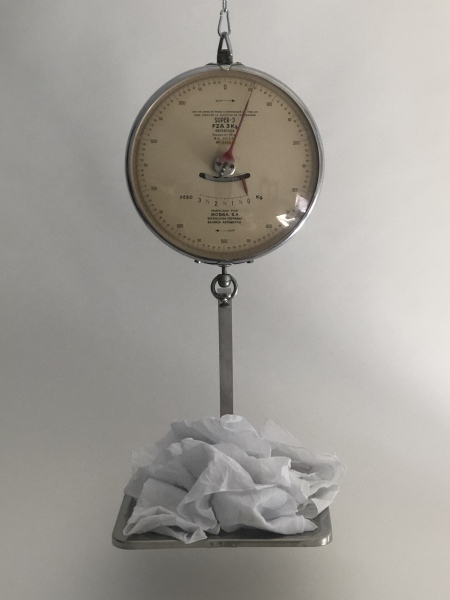
Measure of Sadness (kg)
-
1
Measure of Sadness (kg)
-
1
-
Reconciliare, 2018, Ceramic and Video.
This is an ongoing project where I chose to represent a relationship with a bowl.
By breaking the bowl and fixing it again I represent the dynamics of the relationship and the scars that remain.
This piece begs the question of how many falls the bowl can sustain until it cannot be put back together?
-
Transfigured, 2019. Postcards and Dead Bird. ⌀ 2,2 m.
"There will be a year in which there will be a month, in which there will be a week in which there will be a day in which there will be an hour in which there will be a minute in which there will be a second and in that second will be the sacred not-time of death transfigured."
-Clarice Lispector-
Sometimes something happens, there is an event, or it is the straw that broke the camel's back that causes a situation to explode. It reaches a point of no return. A rupture occurs; whether we stop trusting someone, fall into indifference, or maybe we realize some things that we had refused to see or in which we did not believe. In any case, no matter how absurd it may seem, we cling to some symbol, image, smell, or situation, to put all the weight in it. Suddenly, this element represents everything that is wrong.
This piece is an example of these representations; a death that invites us to reflect on it as a transmutation of the being. A series of broken dreams, of failures, and of falls that lead us to death, literal or figurative, offering us the purest freedom that can exist.
-
Habitare,2019. Keys and Intestines. 20 x 150 cm.
The word inhabit comes from the Latin word “habitare”.
Habitare, is the frequentative form of the verb to have (habere) and it refers to a repeated to "have" implying a continuous action.
It means to have something/a space, which we frequent and make our own. Unlike a place we visit, to inhabit a space it is not enough to be there in the present, it must be a recurring presence.
Therefore, in addition to the action of being in a specific place, it requires a temporary implication, a prolonged duration; A, where and when.
The home or the place that is inhabited, also positions us in a social and cultural context influencing who we are, giving us part of our identity; a, to be (where) and to be (who); whereby, our dwelling defines where and when, who we are and where we stand.
Without a place to live in, space and time are so abundant that it is difficult to focus and remain in a place to settle and be part of. We get lost in a sea of possibilities and fluctuations. This feeling of permanence/belonging is vital in human experience.
The symbolism of the key is the secret or treasure.
For me, it represents the possibility of entering and leaving a protected site, going from the personal and intimate to the public and social and vice versa.
It is a symbol of shelter, refuge; It is freedom and independence.
Having the key to a “house” gives me the peace of mind of knowing that I can go to a place where I am welcome and I can lower my guard, be vulnerable and where I can cover my basic needs.
So, returning to universal symbolism, yes, the key represents the greatest treasure.
In this piece I have chosen a key that has not yet been adapted to open anything.
It is a useless key, in its gross state.
It is an object with all the potential but that is really useless. This generates great frustration.
It makes us see that the key itself, as an object, as a piece of metal, is not really important but what it implies, what it gives us access to, what it represents. It would be necessary to see the key rather as a verb, as an act of opening and closing, of entering and leaving.
We can buy 500,000 keys from a factory in China and still not have a dwelling, but without this unique special key we will not be able to access our shelter.
In turn, this vain key with the greatest potential is a promise that in the future there will be a home.
This key gives us hope and reminds us that the capacity is there.
This infinite set of possibilities, so frustrating and null, and at the same time hopeful and liberating, is stuffed in the intestine.
The main function of the intestine is to discern between nutrients and waste; absorb the first together with the liquids and push the rest out. At this stage of digestion, what does us good is assimilated and what not is pushed out.
I use this element as an analogy for the processing and assimilation of an idea, or rather of everything that this blank key means. Admit that one may not have a home but that you have the certainty and ability to create one. To look for this physical but also emotional, spiritual, cultural space, where one feels at peace and builds the necessary bonds and simultaneously let go of this anxiety and anguish of not having it at that moment.
It is a promise, an invitation to trust but also to act.
Built with Berta.me

